If you’re wondering, “Can I use bigger tires on my car?” the answer is usually, “It depends.” Before you buy that new set of wheels, there are a few things you should know about putting bigger tires on a car.
While there are many benefits of bigger tires, prospective buyers should consider how bigger tires affect vehicle stability, safety, fuel economy, and speedometer accuracy — among other essential pros and cons of upsizing tires on trucks and SUVs.
At Tires Plus, we always recommend that you follow your vehicle manufacturer’s recommendations for tire selection and sizing. However, some motorists choose to slightly deviate from their vehicle’s original tire and wheel size for performance or style purposes.
Plus-sizing involves installing wheels with a larger diameter with a low-profile tire that’s the same diameter as the original — meaning it doesn’t impact ground clearance or the speedometer. In some cases, plus-sizing helps enhance a vehicle’s cornering and handling performance capabilities. However, in most situations, this is purely a stylistic choice. Our expert technicians can help give you guidance on if and how your vehicle’s tires should be plus-sized.
Up-sizing involves deviating from the manufacturer-recommended tire size by installing tires with a larger diameter on wheels that are the same size or bigger. Up-sizing impacts the speedometer, meaning it requires reprogramming the vehicle’s computer.
Additionally, larger tires weigh down the wheel assembly — which may affect fuel economy and place unnecessary stress on the powertrain and brakes. If planned or installed incorrectly, up-sized tires may also rub the wheel well, brake calipers, or vehicle frame, potentially wearing down any parts they grind against.
At Tires Plus, we generally recommend against up-sizing your vehicle’s tires.
It's best to follow your vehicle manufacturer’s guidelines for tire selection and sizing, as right-sized tires help support proper stability and performance. If you decide to change your tires from their original size, make sure that the new tires meet or exceed your vehicle’s load-carrying capacity at the proper inflation pressure, and consider if the taller tires will impact any Advanced Driver Assistance Systems.
If you decide to change your tires from their original size, make sure that the new tires meet or exceed your vehicle’s load-carrying capacity at the proper inflation pressure, and consider if the taller tires will impact any Advanced Driver Assistance Systems.
Additionally, check beforehand that the larger tires you want are compatible with your wheels and rims’ size and that they don’t rub against the calipers or sides of the wheel well.
When you put bigger tires on your car, SUV, crossover, or light truck, you raise the vehicle’s clearance — increasing body roll and load transfer, which may negatively impact your car’s balance and speed.
Perhaps the most significant benefit of larger tires is the extra distance it creates between your car’s undercarriage and the ground. This is particularly important for off-roading enthusiasts who need that extra space to clear rough terrain.
Higher clearance also helps drivers see farther both on and off the road. Depending on your needs, upgrading tire size can mean installing massive 40-inch tires that can traverse boulders or merely adding a few extra inches of diameter.
Up-sizing your truck’s tires is more complicated than just installing larger tires on the wheels and calling it a day. In some cases, you will have to install new wheels that are compatible with your larger tires. If the tires you want are too big for your wheel well, you may have to install a lift or leveling kit to make room for them, which could affect getting proper wheel alignment services in the future.
While new rims and lift kits are often a desirable and trendy addition to bigger tires, they also represent additional costs that you must factor into your decision!
Additionally, a set of bigger tires means you will need to adjust both the speedometer and possibly the tire pressure target data to accurately reflect the correct speed, the corresponding correct miles driven, and any target PSI changes with your new wheels.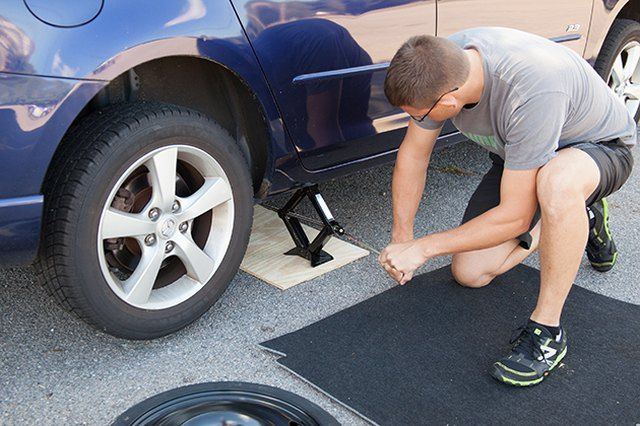
There isn't much to change with the TPMS besides swapping it to the new wheels and relearning positions if needed. Only some vehicles allow access to the Electronic Control Module (ECM) to change the tire size in the computer so it reflects on the odometer and speedometer.
Some believe that, because bigger tires result in higher ground clearance, they offer superior off-road handling. However, finding all-terrain or max-traction tires in the right size for your truck or SUV can also benefit its performance off the beaten path. With deeper and broader treads to grip uneven and loose terrain, max traction tires are tough enough to go wherever the trail takes you!
All that extra tire can seriously lower fuel economy. Bigger, more aggressive tires are great for backcountry trails but can be noisy and inefficient on paved roads. A deeper and wider tread can increase your vehicle’s rolling resistance, which means your car has to work harder to overcome the “stickiness” of all that extra traction.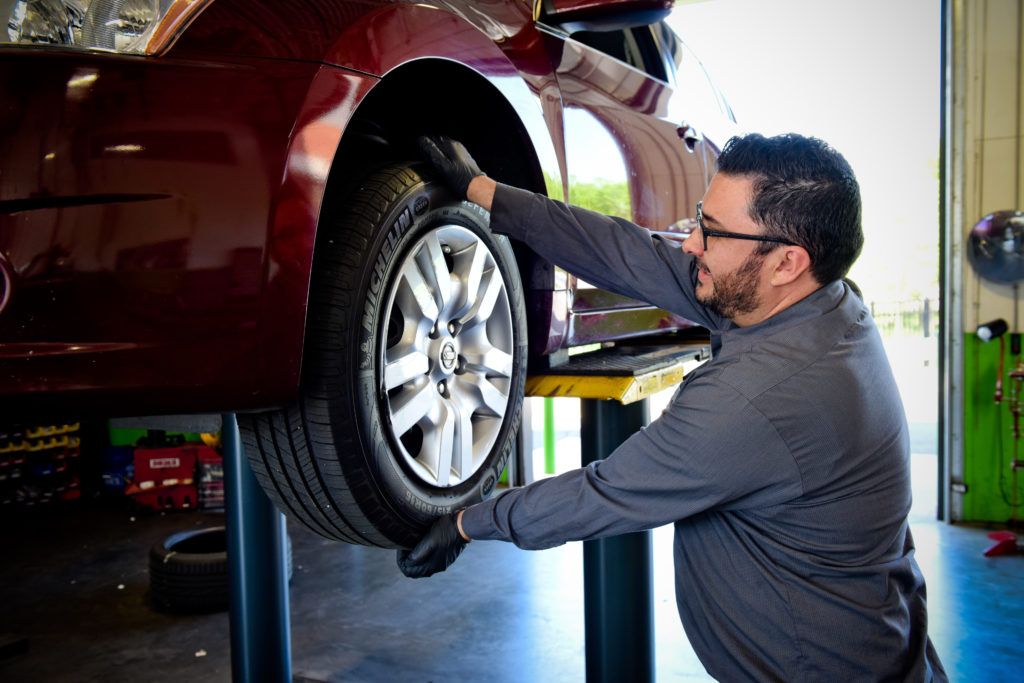
Bigger tires — usually accompanied by bigger rims and higher suspension — are a popular trend among truck drivers. While some people want the off-roading advantages that come with bigger tires, sometimes the big wheels are all about style points. Upgrading your tire size is one way to customize the look and feel of your driving machine.
Naturally, increased height from larger tires means you have a higher center of gravity. This changes the handling of your vehicle by increasing body roll and load transfer. In some cases, you may experience less stability when braking and cornering — especially if traveling at high speeds. Additionally, any changes in ride height and in some alignment angles may result in the Advanced Driver Assistance Systems needing recalibration.
Style points aside, some manufacturer’s will explicitly advise against increasing your vehicle’s tire sizes. Additionally, certain automakers will even void your vehicle’s warranty if you decide to modify its suspension with larger tires and a lift kit.
Additionally, certain automakers will even void your vehicle’s warranty if you decide to modify its suspension with larger tires and a lift kit.
Putting bigger tires on your car will affect your vehicle's average miles per gallon (MPG). There are several reasons larger tires lower fuel economy.
First, bigger tires are usually much heavier. Adding a set of four big and heavy tires to your vehicle will add a lot of new weight. That added weight can hurt your car’s acceleration and expend more fuel. It can also put more strain on your brakes to slow down the vehicle.
Second, wider tires may stick out from the wheel well instead of staying in line with your truck or SUV. This can make your car less aerodynamic and increase fuel usage.
Lastly, as previously mentioned, wider and more aggressive tires have a larger contact patch with the road that can increase rolling resistance.
Modifying your car with larger tires will alter the accuracy of your speedometer.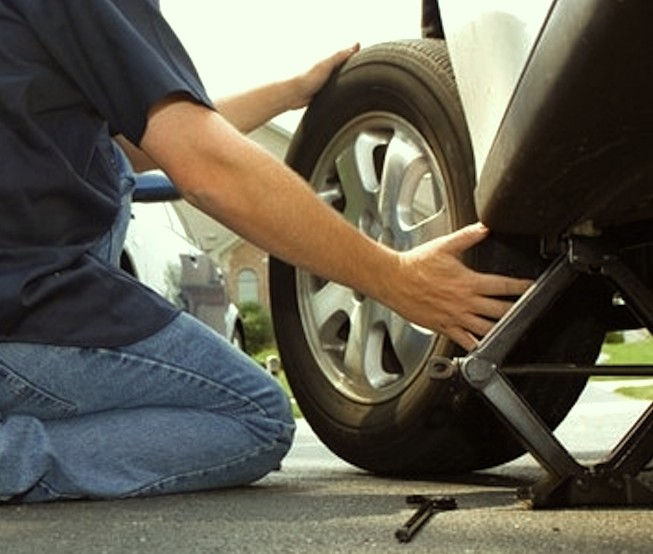 This is because part of the speedometer’s read-out is measured by the revolution of your tires, based on the tire’s circumference.
This is because part of the speedometer’s read-out is measured by the revolution of your tires, based on the tire’s circumference.
When you install bigger tires, if the speedometer is not recalibrated to the new tires’ increased circumference, it will not display the correct speed. You will need a technician to either adjust the speedometer gear or reprogram your vehicle’s computer to compensate for the change in tire size if applicable.
Want to upgrade your vehicle’s tires but not sure where to start? Head to a Tires Plus in your city to talk to our experts about plus-sizing, off-roading tires, and everything in between. We'll help you pick out the right size, type, and tread style for your make and model so you can get the tires you need for the driving experience you've always wanted.
There are many benefits to installing larger wheels on a vehicle. From improved traction, more control, and added appearance, large tires have become a new trend on a variety of vehicles.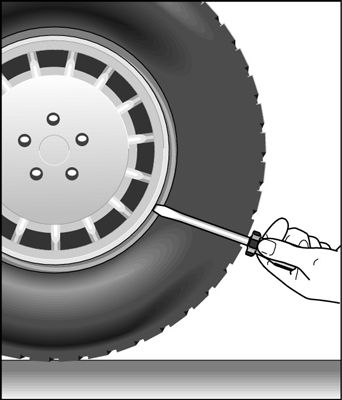 Before you buy that new set of wheels, there are a few things you should know about putting bigger tires Greenville on a car from Pugh’s Tire and Service Center.
Before you buy that new set of wheels, there are a few things you should know about putting bigger tires Greenville on a car from Pugh’s Tire and Service Center.
At Pugh’s Tire and Service Center, while we recommend that vehicle owners follow the manufacturer's guidelines on tire sizing and selection, we also understand and support drivers who choose to deviate from these suggestions to enhance their performance or personal style. Before making a decision, we encourage you to understand the available options on how to alter your car and the effect it can have on your driving experience. There are two routes one can take when upgrading your wheels and tires; plus-sizing and up-sizing.
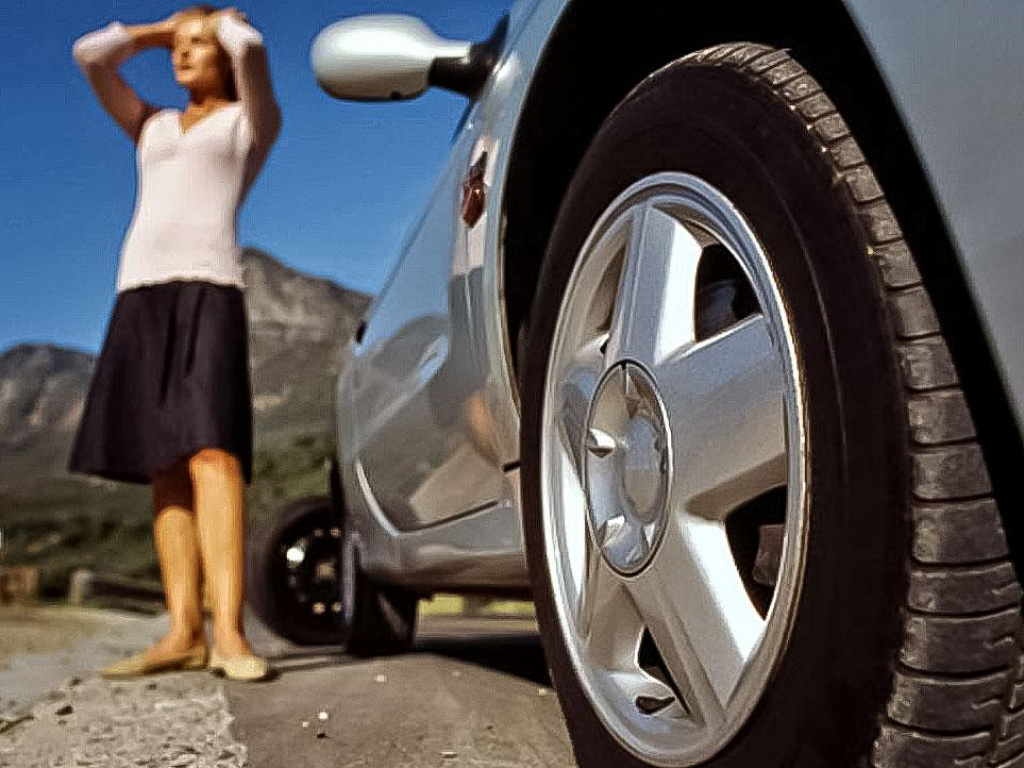 While it can provide more ground coverage, most choose this tire option solely for appearance.
While it can provide more ground coverage, most choose this tire option solely for appearance. In either situation, the professionals at Pugh’s Tire and Service Center Washington tire shop strongly recommend visiting one of our locations to receive an expert's advice on which size and type of tires Greenville you should transition into.
While the final decision to size up is solely based on preference, here are a few pros and cons about doing so.
Pros:
Cons:
If you are in the market to upgrade your vehicle’s tires but are not sure where to start, head to Pugh’s Tire and Service Center, your local Greenville and Washington tire shop. Our experienced staff members are prepared to steer you in the best direction. From plus-sizing, off-roading tires Greenville, and everything in between, we’ll help you pick out the right size, type, and tread style for your vehicle. Contact us today.
Many motorists ask a similar question, but not everyone decides to deviate from the manufacturer's recommendations.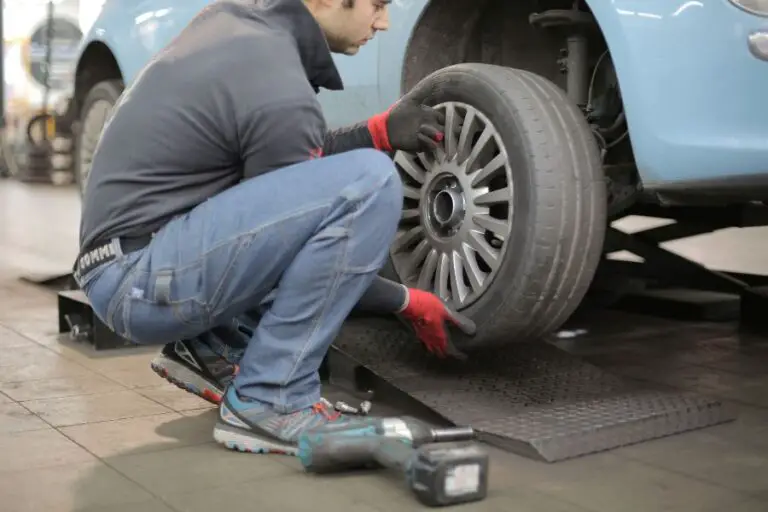
Replacing regular car wheels is one of the simplest types of tuning. Why is this needed? There are many options. The most common reason is not liking the look. Let's say you want the wheels to look spectacular. To do this, the disk must be larger in diameter. Well, or you bought a used car, and the design of the rims absolutely does not suit you. Perhaps you liked some specific wheels, but their dimension is not included in the list recommended by the car manufacturer. You can also change wheels based on practicality. But how can the installation of such wheels turn out in the future? Let's figure it out.
First, let's remember the key parameters of the wheel.
The main dimensions of the tire: D is the outer diameter of the tire; H is the height of the tire profile; B - tire profile width; d is the diameter of the wheel rim (tire).
The main dimensions of the tire: D is the outer diameter of the tire; H is the height of the tire profile; B - tire profile width; d is the diameter of the wheel rim (tire).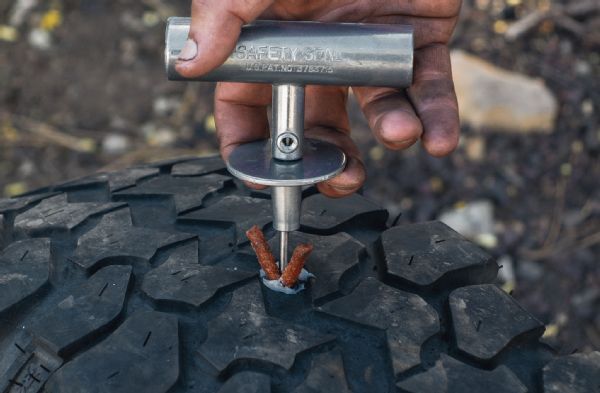
Related materials
The traffic police prescribed requirements for converted cars
Next, we will tell the story on the example of tires for a very common size on B-class cars 185/65 R15. These are the popular Rio, Solaris, Logan, Largus, etc. By the way, let me remind you what all these designations mean.
So, there are several ways to move away from the standard wheel size .
While maintaining the standard size of the rim, we increase the width of the tire profile while maintaining the percentage of height to width. In our example, we get 195/65 R15. It is important to know here that all cars are designed for the installation of snow chains with a size of at least 12 mm. Indeed, in some European countries, driving on mountain roads without chains is prohibited, and not a single self-respecting manufacturer will make a car so that it cannot be operated in the mountains of France or Switzerland.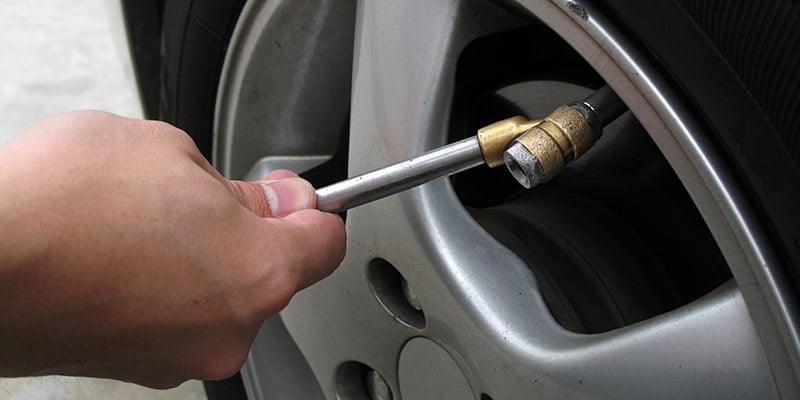 Therefore, an increase in the width of the tire profile is permissible in most cases by up to 24 mm. At the same time, the car will become a little softer on the go, and wider tires will improve braking performance.
Therefore, an increase in the width of the tire profile is permissible in most cases by up to 24 mm. At the same time, the car will become a little softer on the go, and wider tires will improve braking performance.
Related materials
Wheel care: checking wheel and tire products
We leave the rim unchanged, and increase the percentage of tire profile height to width to 70. In our example, we get 185/70 R15. The outer diameter of the wheel increases by 20 mm, which is quite acceptable (remember the reserve for installing chains). Everything would be fine, but in our specific example, the factor intervenes that tires of this dimension are produced mainly for commercial vehicles and they are too rigid and expensive to install on a passenger car. However, in other dimensions, the situation may be different.
The story of a friend's car is quite revealing.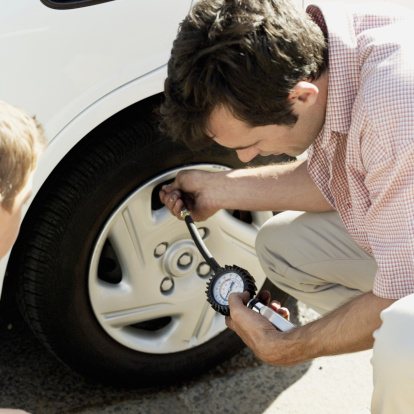 He bought a Kia Rio with a 1.6 engine and a 6-speed automatic. The regular wheels of the car had a size of 185/65 R15. The owner drove through the summer season and was not happy with the rigid suspension of the car and insufficient ground clearance. Then he decided to change the behavior of the car, not by tuning the springs with shock absorbers, but by working with the wheels. In preparation for the next summer season, he used forged wheels with a diameter of 14 inches, which completely matched the mounting dimensions.
He bought a Kia Rio with a 1.6 engine and a 6-speed automatic. The regular wheels of the car had a size of 185/65 R15. The owner drove through the summer season and was not happy with the rigid suspension of the car and insufficient ground clearance. Then he decided to change the behavior of the car, not by tuning the springs with shock absorbers, but by working with the wheels. In preparation for the next summer season, he used forged wheels with a diameter of 14 inches, which completely matched the mounting dimensions.
The previous generation Kia Rio was equipped with 15-inch wheels in the base, but to make the car softer, the owner installed 14-inch wheels with 195/70 R14 tires.
Kia Rio of the previous generation was equipped with 15-inch wheels in the base, but to make the car softer, the owner installed 14-inch wheels with 195/70 R14 tires.
Related materials
Tire test "Behind the wheel" - we measure the braking distance in heat and cold
There is noticeably more air between the rim and tire. The outer diameter of the wheel has also grown (by 9 mm). As a result, the smoothness of the ride has become fantastic. When overcoming road irregularities, the car, which was not initially famous for its energy-intensive suspension, began to resemble cars of the log-shaped family, which are super comfortable on Russian roads. Soft, quiet, smooth. All the problems of the dead Russian roads and the rigid Korean suspension have disappeared. He does not plan to drive, so he does not care about the possible deterioration in road holding at very high speeds.
The outer diameter of the wheel has also grown (by 9 mm). As a result, the smoothness of the ride has become fantastic. When overcoming road irregularities, the car, which was not initially famous for its energy-intensive suspension, began to resemble cars of the log-shaped family, which are super comfortable on Russian roads. Soft, quiet, smooth. All the problems of the dead Russian roads and the rigid Korean suspension have disappeared. He does not plan to drive, so he does not care about the possible deterioration in road holding at very high speeds.
However, disc diameter reduction is very rare. Much more often it happens that the owner chooses discs one or even two sizes larger. And "wraps" them in low-profile tires. At the same time, the overall dimensions of the wheel remain almost unchanged or grow within acceptable limits.
A typical low profile tire.
A typical example of a low profile tyre.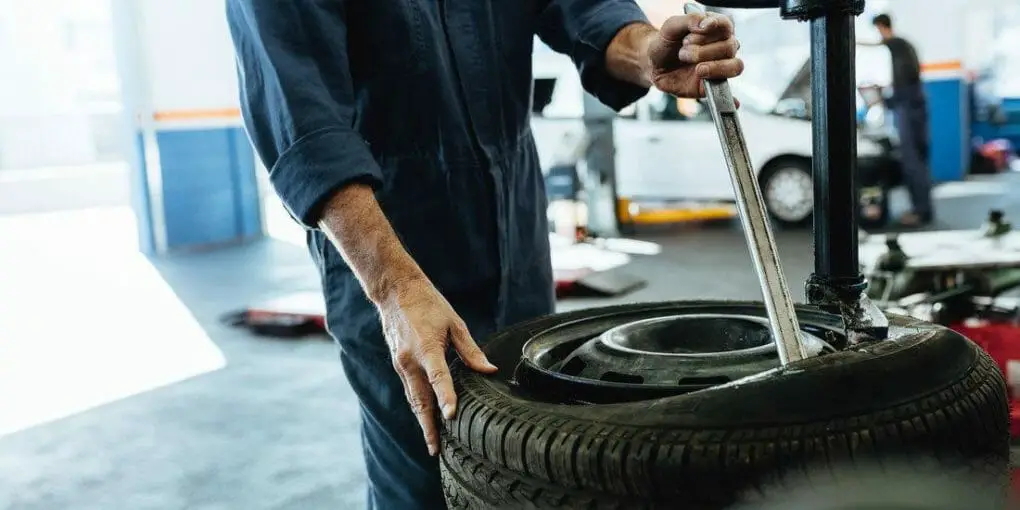
Related materials
Tire pressure: your norm
Looks spectacular, but first of all, smoothness suffers. Yes, and there are much more chances to damage a wheel on a bad road, because the lower the height of the tire profile, the less the ability of such a tire to withstand shock loads. In everything you need to know the measure. Returning to our example, Rio and Solaris cars in expensive trim levels sport 16-inch wheels with 195/55 R16 tires. In this case, you can play a little with the sizes. For example, a 195/60 R16 tire will fit in the wheel well without any problems, since its outer diameter will increase by only 19mm. The clearance will grow by a decent 9.5 mm, but you can forget about the softness of the ride provided by the 15-inch wheels of the basic modification.
Another story when the owner of the car decides to install wider disks.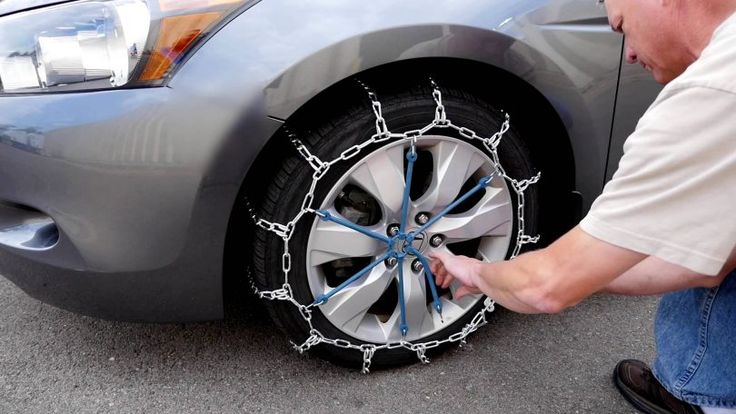 Some people like it when the wheel protrudes a little beyond the arch. Please note that changing the dimensions of the wheel and tire can significantly increase the mass of the wheel assembly. Such weighting will negatively affect the life of the suspension elements and even the body, since large unsprung masses can cause resonant vibrations for which the suspension is not structurally designed. It is also important to remember such a parameter as wheel offset.
Some people like it when the wheel protrudes a little beyond the arch. Please note that changing the dimensions of the wheel and tire can significantly increase the mass of the wheel assembly. Such weighting will negatively affect the life of the suspension elements and even the body, since large unsprung masses can cause resonant vibrations for which the suspension is not structurally designed. It is also important to remember such a parameter as wheel offset.
Wheel offset is the distance between the plane of symmetry of the rim and the surface adjacent to the vehicle hub. From left to right in the diagram are shown: negative overhang, zero overhang and positive overhang.
Wheel offset is the distance between the plane of symmetry of the rim and the surface adjacent to the vehicle hub. From left to right in the diagram are shown: negative overhang, zero overhang and positive overhang.
Those who like to change the offset of the rims, as a rule, tend to place the wheels wider.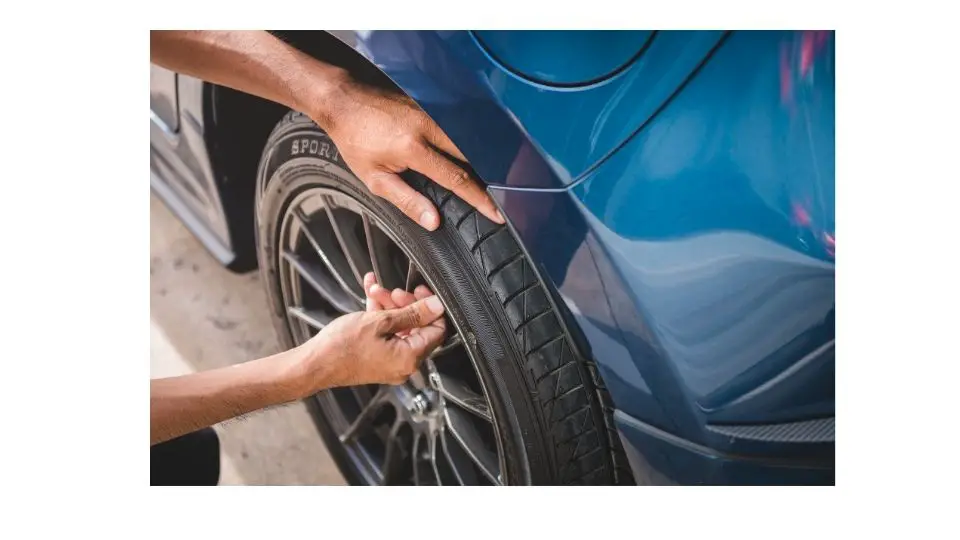 The aesthetic component of such changes is controversial, but the resource of the suspension elements will certainly decrease.
The aesthetic component of such changes is controversial, but the resource of the suspension elements will certainly decrease.
| It is, of course, possible to pull narrow and inexpensive tires onto rims that look more like solid pipe sections with flanges, but the deformation of the tire carcass will soon render it unusable. You don't run into many of these. Of course, it is possible to pull narrow and inexpensive tires onto rims that look more like solid sections of pipes with flanges, but the deformation of the tire carcass will soon render it unusable. You don't run into many of these. | Even large crossovers, which, in comparison with sedans, seem to be a sort of bumpkins, when you install low-profile tires, they begin to manage at least “good”. Even large crossovers, which in comparison with sedans seem to be a kind of bumpkin, when you install low-profile tires, they begin to manage at least "good". | On the utility Sobol, a tuning enthusiast installed discs that significantly increased the track. Curious looks from others are guaranteed, as well as a reduced life of wheel bearings and shock absorbers. On the utilitarian Sobol, a tuning enthusiast installed discs that significantly increased the track. Curious looks from others are guaranteed, as well as a reduced life of wheel bearings and shock absorbers. The wheel may touch body parts. If the width and diameter of the wheel grow no more than 24 mm from the maximum wheel size recommended by the manufacturer, then this problem is not terrible for you. Only after that you can’t put chains. |
| Economy improvement. Economy improves slightly on country roads, especially on vehicles with gearboxes that have few gears (4 or 5). | Vehicle roll increase. Yes, the roll will increase slightly, due to the fact that the center of mass is now slightly higher. | |
| Change the speedometer and odometer. Standard instruments always overestimate the readings. You can check by GPS. And with new, slightly larger wheels, the readings will come in line with reality. Plus or minus you decide. Still, such a discrepancy is made primarily for security reasons. We are for accurate instrument readings. | Derating. The new wheels are a little harder for the engine to turn, and they themselves are a little heavier. | |
| Reducing the offset of the discs (when the wheels protrude more out of the wheel arches) provides a wider track, which improves the lateral stability of the machine . | The wide disc is easily damaged by when touching a curbstone. In addition, if the width of the disk is much larger than the standard one, the tire carcass does not work correctly. | |
| In most cases, looks more aesthetic and catchy. | Protruding wheels overload wheel bearings and make driving difficult . As soon as the front wheel hits an uneven road, the steering wheel literally pulls out of your hands. |
It is convenient to use a tire calculator for calculations.
Custom wheels are prohibited by law. Therefore, any experiments with the dimensions of tires or wheels are illegal. An exception is if the new dimension is allowed to be set by the manufacturer. However, in reality, not everything is so scary: if the rims on your small car are not boiled down to a width of 12 inches, if the diameter is not 19 inches or more, then such wheels will not arouse the interest of traffic police officers. But with obtaining a diagnostic card, problems will already arise.
Boiled discs may be of interest to traffic police officers, because the use of such discs is a direct intervention in the design of the car, which is prohibited. In this case, you can try to convince the traffic cop that you "get to the place of repair with the necessary security measures."
In this case, you can try to convince the traffic cop that you "get to the place of repair with the necessary security measures."
Boiled discs may be of interest to traffic police officers, because the use of such discs is a direct intervention in the design of the car, which is prohibited. In this case, you can try to convince the traffic cop that you "get to the place of repair with the necessary security measures."
In conclusion, I invite you to share what changes in tire and rim sizes you have applied to your cars, and what you think it has resulted in.
What if you put bigger wheels? — examination ZR
What if we put bigger wheels? — examination ZR
Bus parameters
Many motorists sometimes wonder how many centimeters the height of the tires installed on their car is and whether it is possible to make the car taller with the help of them.
The tire height (profile) is easily calculated from the markings on the sidewall.
From this article you will learn:
For example, the marking 195\70\r15 (in the picture) means a tire width of 195 mm and a height of 70% of the width of 195 mm (136.5 mm). R15 is the disc diameter in inches (1 inch equals 2.54 cm).
The total diameter of an automobile wheel is the sum of the rim diameter and the difference between the outer and landing diameters of the tire (profile). In our case, the diameter will be 15 x 2.54 + 2 x 13.65 = 65.4 cm.
The wheel diameter may decrease during operation due to tire tread wear. This must be remembered by owners of sports cars with very low ground clearance.
The tread height of a standard summer car tire is usually 7.5 to 8.5 mm, and a standard winter tire is 8.5 to 9.5 mm.
That is, if the car has been running on tires for the 3rd or 4th season - this means that the clearance under its bottom is already about 1 cm less than on new tires - and this is enough to with two riders in the back seat start striking the bottom of the speed bumps.
The vehicle's ground clearance can be significantly increased by the height of the tires the vehicle is running on.
For example, a car is running on 215\55\r15 tires that are 118mm high (55% of 215mm).
If the owner of the car, when changing tires, decides to put tires a little higher than the standard, for example 215 \ 60 \ r15, then the ground clearance of his car will increase by more than 1 cm due to the height of the tires, which will now be 129mm (60% of 215mm).
And if the car owner decides to seriously increase the ground clearance of his car, he can consider even larger tires, for example 215\65\r15 or even 225\65\r15, which will increase his ground clearance by more than 2 cm and 2. 5 cm respectively.
5 cm respectively.
In the lesson on increasing the ground clearance of a car due to tires, the main thing is not to get too carried away so that the wheels do not rub against the wheel arches of the car.
It must be remembered that even if the wheels fit without problems in the wheel arch, they can begin to rub against the arch when the car is fully loaded, or when the steering wheel is fully twisted.
The car owner must remember that the behavior of the car on the road depends greatly on the tires.
Higher tires change the center of gravity of the car - it moves up. Also, tires with a high profile are easier to "break" under the weight of the car.
These two factors can make the car more "rolly" in corners, which increases the likelihood of a rollover.
At the same time, high-profile tires are better at absorbing impacts and handling bumps in the road, making for a smoother, more comfortable ride.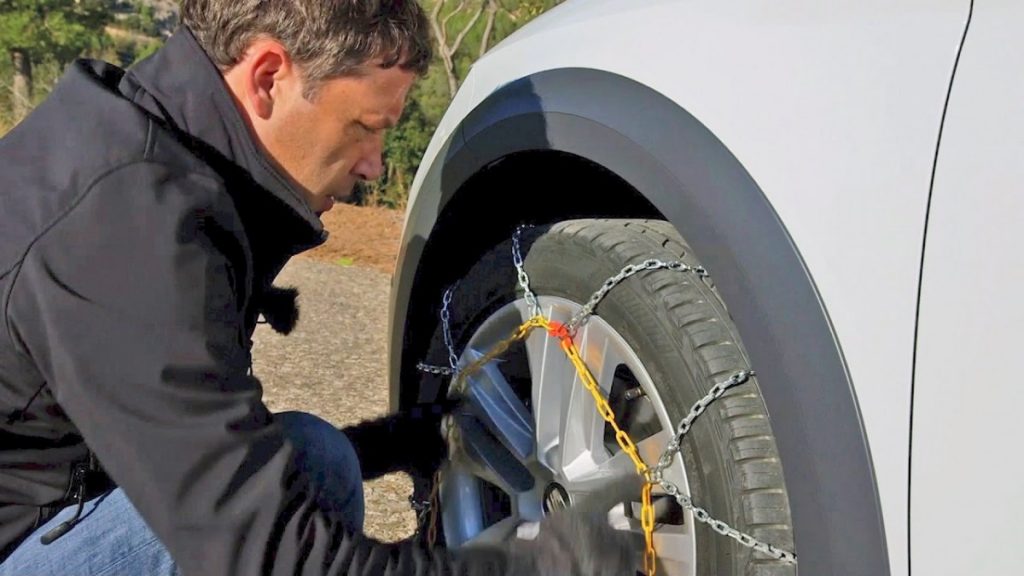
So if the owner of the car is not satisfied with the too stiff suspension of the car, then he may well make it a little softer due to the higher profile of the tires.
Often, car owners install wider tires on their cars, thereby wanting to increase tire grip and, as a result, improve car handling.
These tires can actually improve the handling of the car, but this installation will have two side effects.
The first one is the increased width of the tires for better fuel consumption.
Second, wider tires can make a big difference in how your car behaves on the road. This is especially noticeable when driving along a rut, which often forms in the summer in the heat on highways.
The owner needs to be prepared for the constant "throw" of the machine to the right or left when driving at high speed.
There is a certain group of car owners who install tires of completely different sizes on their cars - higher and wider than provided by the car manufacturer (jeep owners and motorists who have suburban areas with very bad roads do this) .